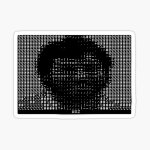daver2
10k Member
>>> Ebay has them for $60-$100 !
What are some people thinking?!
Dave
What are some people thinking?!
Dave
>>> Ebay has them for $60-$100 !
What are some people thinking?!
Dave
Ugh, I guess that's an issue. Looks like it's still not too hard to lay hands on a 6802 or 6808, which should work with some tweaking? But it's definitely not going to be as amenable to modern builds as a Z80 or 6502 based machine.
I feel the same about the Apple 1. I don't think that it is surprising that the Apple 1 recreations seen here are much less motivated by the machine's utility or technical merits than they are by a desire to create a hardware show-piece as close to the original design as practical.
But, sure, if an Apple I is what you want because it's "popular" I guess I won't judge.
But, sure, if an Apple I is what you want because it's "popular" I guess I won't judge.
So there you can have a 100% work-alike Apple 1 clone, but with the additional capability of proper display control should you wish to program for it.
A Shelby Cobra kit (minus engine drivetrain wheels and tires or paint) is $20K, once you get the rest and paint it then your double that. A replica Apple I is still much cheaper and you don't have to worry about getting dirty or dropping a tranny on your foot.
Realistically you could port this to almost any better 6502 computer, subject to memory map limitations.

Total cost? Well.. too much! I have probably used over $10000 at this point, but its really about the experience.
Sure, I could convert my PET-2001 clone this afternoon if I wanted to. I was just detailing the hardware and firmware modifications that would be required to upgrade the original basic design to memory-mapped video but still basically function upon power-on as per the original. This would be something that could be built today in the traditional hardware sense (i.e. no programmable logic or microcontrollers), entirely with current-production parts. It wouldn't be any worse than any other rudimentary home brew single-board 6502 computer, and certainly better than anything with a hex-pad for data input or something without video display capabilities.
Just imagine the sense of satisfaction and pleasure that you could derive, after soldering in all of the parts, from running the original ASCII-art slideshow featuring your hero:
Except that there couldn't be the Apple II without the Apple 1. It's the lessons learned from the Apple 1 that led to the achievement of the Apple II. Being able to demonstrate the progression of technology is part of the appeal of an Apple 1 build - next to an Apple II. And yes, I'm biased since the Apple II was my first.Heh, that's the irony there, I guess. If you're building a shrine to Woz's genius specifically I'd say the Apple II is what belongs on your altar. I've always kind of felt like the Apple 1 worship is more an "Apple the Company" or even a "Steve Jobs" thing, but, eh, I've definitely only really observed that whole situation from the outside.
(I mean, sure, I guess if we were redesigning this thing into a "generic" 6502 computer that has a memory-mapped monochrome 40 column text-only display and only really resembles the Apple I in that it boots a version of the Woz monitor instead of a much better machine language monitor we could get the parts count down a ton by using more modern parts/techniques like sharing the same RAM chip between system memory and video refresh, etc... like the Apple II already does... but what advantage would that have over just building a replica of an already better computer? It wouldn't be "designed by Woz" nor look like it's ... taking a deep swallow here... "worth" a quarter of a million bucks.
My Woz ASCII art comment was a bit of humor BTW. You are starting to sound like a bit of a dogmatist now.
Its fun to build something slightly historic, even if it is a bit crap
